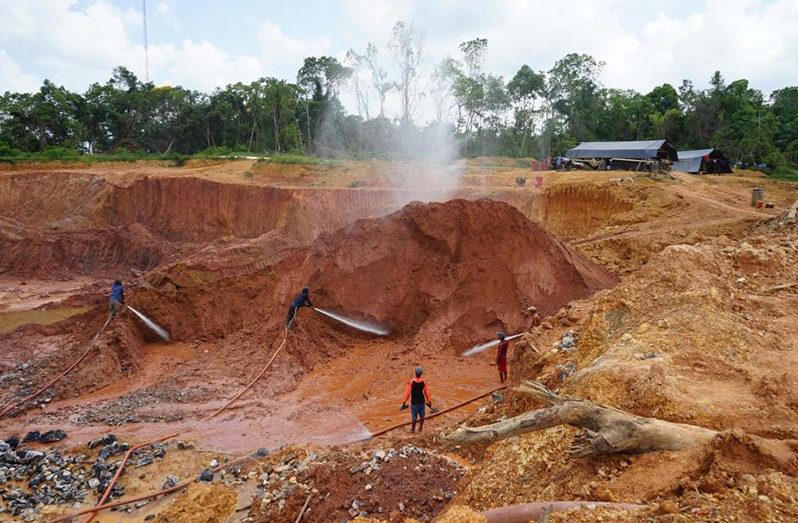–President Ali says
OWING to investments in technology, Guyana has seen a decline in illegal mining in its forested regions, President Dr. Irfaan Ali has said.
The Head of State made this disclosure on Thursday during a presentation at the Sixth Annual Security Challenges in Latin America Forum held at the Johns Hopkins University Bloomberg Centre, School of Advanced International Studies, United States of America.
He highlighted that illegal gold mining in the Amazon Basin has been an issue stakeholders have been working to address.
“If you look at our population and the size of our defence force and our law enforcement capability, you will see how difficult it is to police our geographic space or to monitor it,” he said, adding: “Today we can deploy technology that is helping us and we are investing in that technology so we have greater success in identifying, illegal mining and in bringing those, who are culpable to justice.”
According to Dr. Ali, there is an “inextricable link” between national security and natural security that requires attention.
“We have had tremendous reduction in illegal mining. We have more constant monitoring. We have invested more in field officers, and we have more, technology, as I said, deployed to help us in mitigating against this,” he said.
Back in September 2023, this publication reported that gold mining in the Siparuni area has drastically decreased due to the combined efforts of Iwokrama’s rangers, the Ministry of Natural Resources and the Guyana Police Force.
An annual report from the Iwokrama International Centre said that a decrease in illegal mining was recorded.
While the centre did not reveal any specific statistics, it did, however, state that some persons still continue to defy the law and continue to trespass into the Iwokrama Forest.
The report said that monitoring continues with the implantation of a comprehensive monitoring system, through which data is collected and analysed, to monitor changes in naturally dynamic systems and the impact of human activities on the ecosystem.
It includes social, bio-physical, road and river, forest impact, wildlife, water quality and boundary monitoring.
Social monitoring applies a Driver-Pressure-State-Impact-Response (DPSIR) framework that allows for the identification of trends and implementation of mitigation measures.
Bio-physical monitoring identifies target components to monitor pressures acting upon the ecosystem. The information, when analysed, is used to detect and identify trends over the period and informs management systems and forest management planning.
Meanwhile, Iwokrama has existing memoranda of co-operation for community co-monitoring with Surama, Apoteri and Rewa villages, the three indigenous communities located near the rivers that border or pass through the Iwokrama Forest.




.png)









